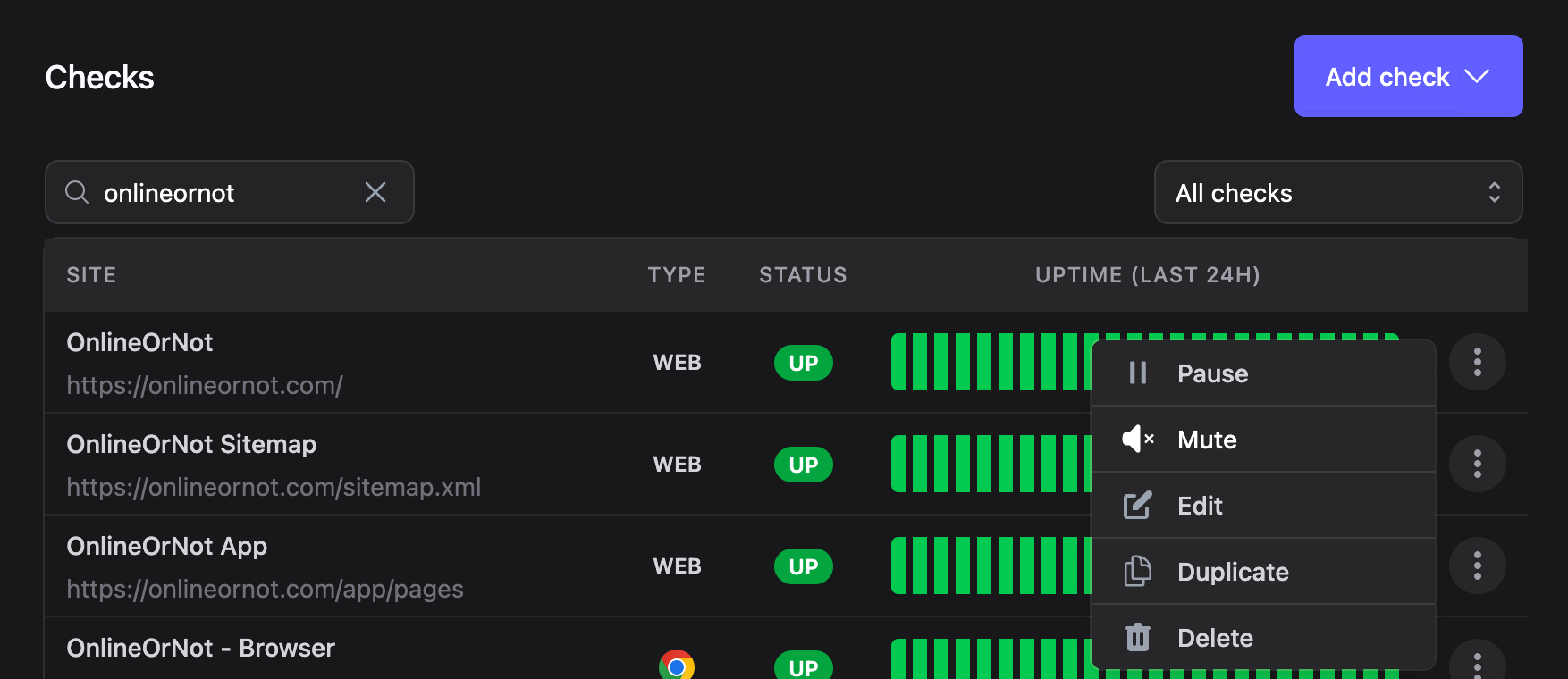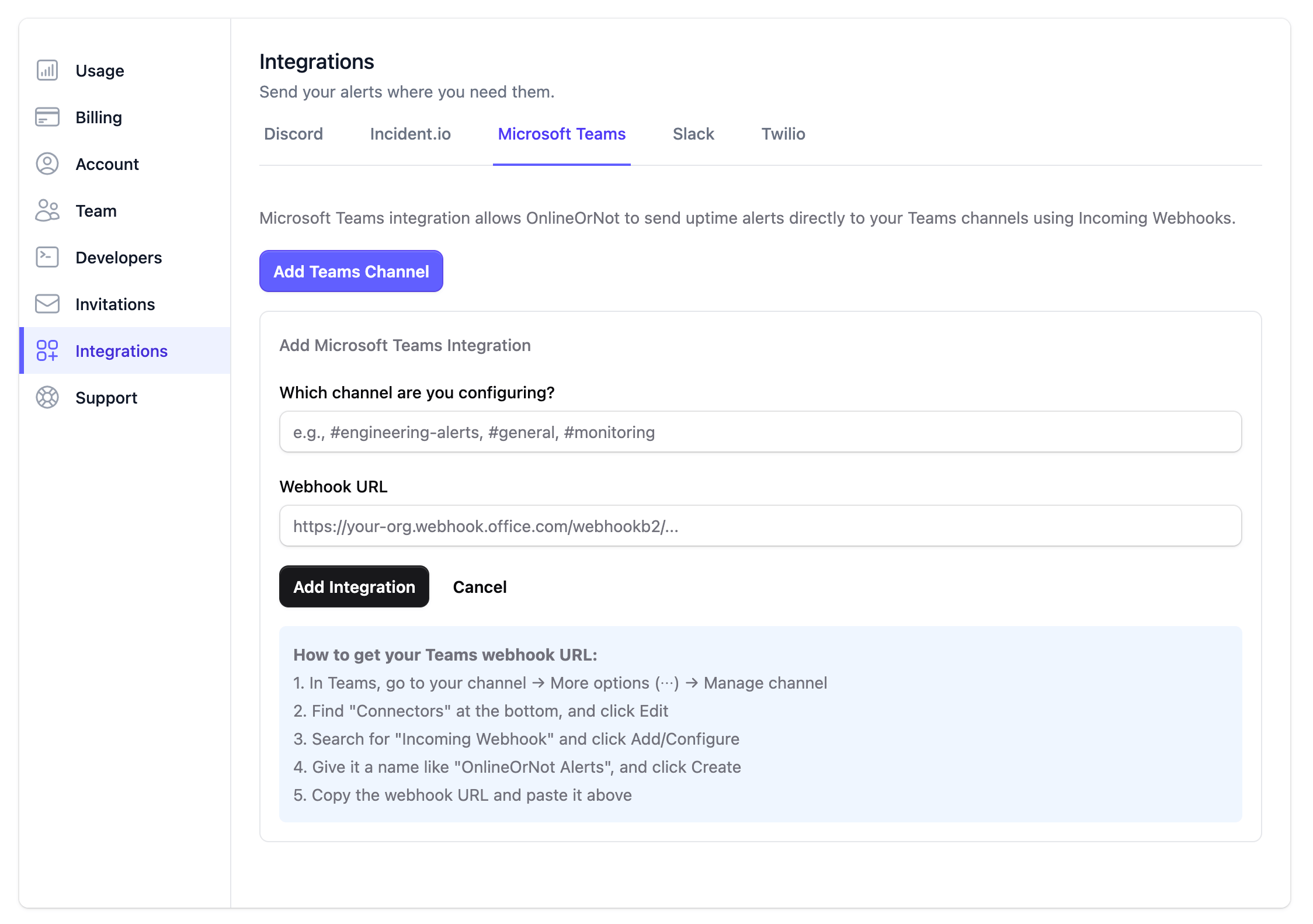OnlineOrNot updates from June/July 2025

Max Rozen / Published: August 04, 2025
In this latest update, I'll walk you through a few features I added that will make working with uptime checks less noisy, an alerts integration with Teams, and a few behind-the-scenes changes that will finally let me build mobile apps for OnlineOrNot.
Table of contents
What's new
Features for Checks
Alert muting
Sometimes you need to keep monitoring running, but temporarily silence the alerts. Maybe you're investigating an issue, or your service is in a known degraded state while you work on a fix.
OnlineOrNot now lets you manually mute individual uptime and browser checks, giving you the flexibility to silence alerts without stopping monitoring entirely.
When you mute a check, OnlineOrNot will:
- Continue running the uptime check
- Keep collecting response time and availability data
- Stop sending alerts and status page updates about downtime or issues
Perfect for those times when you're aware of an issue and actively working on it, but don't want to be bombarded with alerts or confuse your users with status page notifications.

You can also use the API to mute or pause checks from your own codebase.
Confirmation and Recovery periods
Ever been in the middle of fixing an incident, and your service starts recovering but isn't quite 100% yet? Some requests succeed, others fail, and your monitoring keeps flip-flopping between "down" and "up" while you're still working on the fix?
You end up frustrated, and with noisy alerts and status pages that don't accurately reflect that the incident isn't fully resolved.
To solve this, OnlineOrNot now supports confirmation periods and recovery periods:
- Confirmation period - wait for consecutive failures over a specified time period before marking a service as down and sending alerts
- Recovery period - wait for consecutive successes over a specified time period before marking a service as recovered and closing incidents
For example, you can now configure a check to wait for five minutes of consecutive failures before alerting (avoiding false alarms), and wait for fifteen minutes of consecutive successes before marking the service as fully recovered (ensuring it's actually stable before closing the incident and confusing your users).
You can configure these settings in the "Advanced" section when creating or editing any uptime check.

Microsoft Teams integration
OnlineOrNot now integrates with Microsoft Teams, allowing you to receive uptime and heartbeat alerts directly in your Microsoft Teams channels. With this integration, you'll get clear, actionable alerts when services go down, and recovery notifications when they're back up, as well as reminder alerts (if configured).
To get started, head to your OnlineOrNot settings, click the Integrations tab, and connect your Microsoft Teams channel. You can configure different channels for different services, just like with our other integrations.

Behind-the-scenes updates no one will notice
I'm not one to publicize these types of updates too much (most folks don't care that the SQL query powering a commonly-visited page got 80% faster), but this one's worth it.
In July I took the time to rewrite OnlineOrNot's auth engine (the thing that lets you sign-up/login). The original system served its purpose, and was starting to block new features from being built.
The new system runs faster, and we finally have the ability to add:
- Email + password login (for new users only for now, it will be possible to set a password for existing accounts soon)
- SSO/SAML login (work in progress)
- Mobile apps (work in progress)
New reddit community
In case you missed it, there's a bunch of places (LinkedIn, YouTube, Twitter, Discord) you can stay up to date on what I'm doing with OnlineOrNot.
As of this month, there's a new one: reddit.